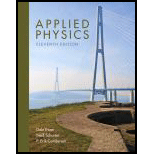
Applied Physics (11th Edition)
11th Edition
ISBN: 9780134159386
Author: Dale Ewen, Neill Schurter, Erik Gundersen
Publisher: PEARSON
expand_more
expand_more
format_list_bulleted
Textbook Question
Chapter 2, Problem 13RP
The formula for the volume of a cylinder is V = πr2h. If
Expert Solution & Answer
Want to see the full answer?
Check out a sample textbook solution
Students have asked these similar questions
The base of a pyramid covers an area of 13.0 acres (1 acre =43 560 ft2) and has a height of 481 ft (Fig. P1.30). If the volumeof a pyramid is given by the expression V = bh/3, where b isthe area of the base and h is the height, find the volume of thispyramid in cubic meters.
Where r is the radius of the sphere and pi = 3.14. If you measure the radius of a bowling ball to be r = 5 in, what is the volume in SI units?
Using the formula V? = ??2ℎ:
Calculate the volume of a solid cylinder with a diameter of 15mm and a height of 21mm.
Chapter 2 Solutions
Applied Physics (11th Edition)
Ch. 2.1 - =stforSCh. 2.1 - a=tforVCh. 2.1 - w = mg for mCh. 2.1 - F = ma for aCh. 2.1 - E = IR for RCh. 2.1 - V = lwh for wCh. 2.1 - Ep = mgh for gCh. 2.1 - Ep = mgh for hCh. 2.1 - 2 = 2gh for hCh. 2.1 - XL = 2 f L for f
Ch. 2.1 - P=WtforWCh. 2.1 - p=FAforFCh. 2.1 - P=WtforiCh. 2.1 - p=FAforACh. 2.1 - Ek=12m2formCh. 2.1 - Ek=12m2Ch. 2.1 - W = Fs for SCh. 2.1 - f = i + at for aCh. 2.1 - V = E Ir for lCh. 2.1 - 2 = 1 + at for tCh. 2.1 - R=2PforPCh. 2.1 - R=kLd2forLCh. 2.1 - Prob. 23PCh. 2.1 - XC=12fCforfCh. 2.1 - R=LAforLCh. 2.1 - RT = R1 + R2 + R3 + R4 for R3Ch. 2.1 - Q1 = P(Q2 Q1) for Q2Ch. 2.1 - ISIP=NPNSforIPCh. 2.1 - VPVS=NPNSforNSCh. 2.1 - Prob. 31PCh. 2.1 - Prob. 32PCh. 2.1 - Prob. 33PCh. 2.1 - Ft=m(V2V1)forV1Ch. 2.1 - Q=I2RtJforRCh. 2.1 - x=xi+it+12at2forX1Ch. 2.1 - A = r2 for r, Where r is a radiusCh. 2.1 - V = r2h for r, Where r is a radiusCh. 2.1 - R=kLd2 for d, where d is a diameterCh. 2.1 - V=13r2h for r, where r is a radiusCh. 2.1 - Solve each formula for the quantity given. 41....Ch. 2.1 - Solve each formula for the quantity given. 42....Ch. 2.2 - For each formula, (a) solve for the indicated...Ch. 2.2 - For each formula, (a) solve for the indicated...Ch. 2.2 - For each formula, (a) solve for the indicated...Ch. 2.2 - For each formula, (a) solve for the indicated...Ch. 2.2 - For each formula, (a) solve for the indicated...Ch. 2.2 - For each formula, (a) solve for the indicated...Ch. 2.2 - For each formula, (a) solve for the indicated...Ch. 2.2 - For each formula, (a) solve for the indicated...Ch. 2.2 - For each formula, (a) solve for the indicated...Ch. 2.2 - For each formula, (a) solve for the indicated...Ch. 2.2 - For each formula, (a) solve for the indicated...Ch. 2.2 - For each formula, (a) solve for the indicated...Ch. 2.2 - For each formula, (a) solve for the indicated...Ch. 2.2 - For each formula, (a) solve for the indicated...Ch. 2.2 - For each formula, (a) solve for the indicated...Ch. 2.2 - For each formula, (a) solve for the indicated...Ch. 2.2 - For each formula, (a) solve for the indicated...Ch. 2.2 - For each formula, (a) solve for the indicated...Ch. 2.2 - For each formula, (a) solve for the indicated...Ch. 2.2 - For each formula, (a) solve for the indicated...Ch. 2.3 - Find the volume of the box in Fig. 2.3. Figure 2.3Ch. 2.3 - Find the volume of a cylinder whose height is 7.50...Ch. 2.3 - Find the volume of a cone whose height is 9.30 cm...Ch. 2.3 - Find the volume of the cylinder. Figure 2.6Ch. 2.3 - Find the cross-sectional area of the cylinder....Ch. 2.3 - Find the lateral surface area of the cylinder....Ch. 2.3 - Find the total volume of the building shown in...Ch. 2.3 - Find the cross-sectional area of the concrete...Ch. 2.3 - Find the volume of a rectangular storage facility...Ch. 2.3 - Find the cross-sectional area of a piston head...Ch. 2.3 - Find the area of a right triangle that has legs of...Ch. 2.3 - Find the length of the hypotenuse of the right...Ch. 2.3 - Find the cross-sectional area of a pipe with outer...Ch. 2.3 - Find the volume of a spherical water tank with...Ch. 2.3 - The area of a rectangular parking lot is 900m2. If...Ch. 2.3 - The volume of a rectangular crate is 192 ft3. If...Ch. 2.3 - Find the volume of a brake cylinder whose diameter...Ch. 2.3 - Find the volume of a tractor engine cylinder whose...Ch. 2.3 - A cylindrical silo has a circumference of 29.5 m....Ch. 2.3 - If the silo in Problem 19 has a capacity of...Ch. 2.3 - A wheel 30.0 cm in diameter moving along level...Ch. 2.3 - The side of the silo in Problems 19 and 20 needs...Ch. 2.3 - You are asked to design a cylindrical water tank...Ch. 2.3 - If the height of the water tank in Problem 23 were...Ch. 2.3 - A ceiling is 12.0 ft by 15.0 ft. How many...Ch. 2.3 - Find the cross-sectional area of the dovetail...Ch. 2.3 - Find tile volume of the storage bin shown in Fig....Ch. 2.3 - The maximum cross-sectional area of a spherical...Ch. 2.3 - How many cubic yards of concrete are needed to...Ch. 2.3 - What length of sidewalk 4.00 in. thick and 4.00 ft...Ch. 2.3 - Find the volume of each figure.Ch. 2.3 - Inside diameter: 20.0 cm Outside diameter: 50.0 cmCh. 2 - A formula is a. the amount of each value needed....Ch. 2 - Subscripts are a. the same as exponents. b. used...Ch. 2 - A working equation a. is derived from the basic...Ch. 2 - Cite two examples in industry in which formulas...Ch. 2 - How are subscripts used in measurement?Ch. 2 - Why is reading the problem carefully the most...Ch. 2 - How can making a sketch help in problem solving?Ch. 2 - What do we call the relationship between data that...Ch. 2 - How is a working equation different from a basic...Ch. 2 - How can analysis of the units in a problem assist...Ch. 2 - How can making an estimate of your answer assist...Ch. 2 - Solve F = ma for (a) m and (b) a.Ch. 2 - Solve =2ghforh.Ch. 2 - Solve s=12(f+i)tforf.Ch. 2 - Prob. 4RPCh. 2 - Given P = a + b + c, with P = 36 ft, a = 12 ft,...Ch. 2 - Given A=(a+b2)h, with A=210m2, b = 16.0 m, and h =...Ch. 2 - Given A = r2, if A. = 15.0 m2, find r.Ch. 2 - Given A=12bh, if b = 12.2 cm and h = 20.0 cm, what...Ch. 2 - A cone has a volume of 314 cm3 and radius of 5.00...Ch. 2 - A right triangle has a side of 41.2 mm and a side...Ch. 2 - Given a cylinder with a radius of 7 .20 cm and a...Ch. 2 - A rectangle has a perimeter of 40.0 cm. One side...Ch. 2 - The formula for the volume of a cylinder is V =...Ch. 2 - The formula for the area of a triangle is A=12bh....Ch. 2 - Find the volume of the lead sleeve with the cored...Ch. 2 - A rectangular plot of land measure 40.0 m by...Ch. 2 - You run a landscaping business and know that you...Ch. 2 - A room that measures 10.0 ft wide, 32.0 ft long,...Ch. 2 - Instead of using a solid iron beam, structural...Ch. 2 - A shipping specialist at a craft store needs to...Ch. 2 - A crane needs to lift a spool of fine steel cable...
Additional Science Textbook Solutions
Find more solutions based on key concepts
26.72 A 6.00-µF capacitor that is initially uncharged is connected in series with a 5.00-? resistor and an emf ...
University Physics with Modern Physics (14th Edition)
A. Suppose that glider D is free to move and glider C rebounds. 1. In the spaces provided, draw separate free-b...
Tutorials in Introductory Physics
3. What is free-fall, and why does it make you weightless? Briefly describe why astronauts are weightless in th...
The Cosmic Perspective (8th Edition)
A long, thin wire carrying 5.6 nC/m runs down the center of a long, thin-walled, pipe with radius 1.0 cm carryi...
Essential University Physics (3rd Edition)
33. Explain why the excess charge on an electrical conducting material is located on its surface.
College Physics
Two students are discussing their answers to Questions 14 and 15.
Student 1: I think Extrasolar Planet System C...
Lecture- Tutorials for Introductory Astronomy
Knowledge Booster
Learn more about
Need a deep-dive on the concept behind this application? Look no further. Learn more about this topic, physics and related others by exploring similar questions and additional content below.Similar questions
- In general, when a derived unit becomes complicated (involves too many standard units), what is done?arrow_forwardIs the following statement reasonable? The area of a dorm room is 49 m2.arrow_forwardCarry out the arithmetic operations (a) the sum of the measured values 756, 37.2, 0.83, and 2; (b) the product 0.003 2 356.3; and (c) the product 5.620 .arrow_forward
- A commonly used turn of mass in the English system Is the pound-mass, abbreviated Ibm, where 1 Ibm = 0.454 kg. What is the density of water in pound-mass per cubic foot?arrow_forwardA popular saying is Give him an inch, and hell take a mile. What would be the equivalent saying using comparable metric units?arrow_forwardState how many significant figures are proper In the results of the following calculations: (a) (106.7)(98.2)/(46.210)(1.01) ; (b) (18.7)2 ; (c) (1.601019)(3712)arrow_forward
- Write the following quantities in standard units. (a) 0.55 Ms (b) 2.8 km (c) 12 mg (d) 100 cmarrow_forwardCheck Your Understanding Restate 4.79105kg using a metric prefix such that the resulting number is bigger than one but less than 1000.arrow_forwardIf we changed our speed limit signs to metric, what would probably replace (a) 55 mi/h and (b) 65 mi/h?arrow_forward
- The measurement 4500.00 cm has how many significant figures? a) 6 b) 2 c) 3 d) 5arrow_forwardThe measured dimension of a rectangular block are 2.267+/- 0.002 in., 3.376 +/- 0.002 in., ans 0.207 +/- 0.001 in. Compute the volume of the block and record the result with th correct number of significant figures.arrow_forwardThe volume of a rectangular wooden crate is 141 m3. It’s length is 7.66 meters & width is 3.75 meters. What is its height?arrow_forward
arrow_back_ios
SEE MORE QUESTIONS
arrow_forward_ios
Recommended textbooks for you
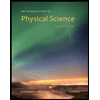 An Introduction to Physical SciencePhysicsISBN:9781305079137Author:James Shipman, Jerry D. Wilson, Charles A. Higgins, Omar TorresPublisher:Cengage Learning
An Introduction to Physical SciencePhysicsISBN:9781305079137Author:James Shipman, Jerry D. Wilson, Charles A. Higgins, Omar TorresPublisher:Cengage Learning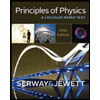 Principles of Physics: A Calculus-Based TextPhysicsISBN:9781133104261Author:Raymond A. Serway, John W. JewettPublisher:Cengage Learning
Principles of Physics: A Calculus-Based TextPhysicsISBN:9781133104261Author:Raymond A. Serway, John W. JewettPublisher:Cengage Learning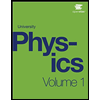 University Physics Volume 1PhysicsISBN:9781938168277Author:William Moebs, Samuel J. Ling, Jeff SannyPublisher:OpenStax - Rice University
University Physics Volume 1PhysicsISBN:9781938168277Author:William Moebs, Samuel J. Ling, Jeff SannyPublisher:OpenStax - Rice University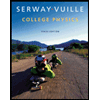 College PhysicsPhysicsISBN:9781285737027Author:Raymond A. Serway, Chris VuillePublisher:Cengage Learning
College PhysicsPhysicsISBN:9781285737027Author:Raymond A. Serway, Chris VuillePublisher:Cengage Learning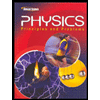 Glencoe Physics: Principles and Problems, Student...PhysicsISBN:9780078807213Author:Paul W. ZitzewitzPublisher:Glencoe/McGraw-Hill
Glencoe Physics: Principles and Problems, Student...PhysicsISBN:9780078807213Author:Paul W. ZitzewitzPublisher:Glencoe/McGraw-Hill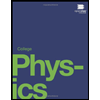 College PhysicsPhysicsISBN:9781938168000Author:Paul Peter Urone, Roger HinrichsPublisher:OpenStax College
College PhysicsPhysicsISBN:9781938168000Author:Paul Peter Urone, Roger HinrichsPublisher:OpenStax College

An Introduction to Physical Science
Physics
ISBN:9781305079137
Author:James Shipman, Jerry D. Wilson, Charles A. Higgins, Omar Torres
Publisher:Cengage Learning

Principles of Physics: A Calculus-Based Text
Physics
ISBN:9781133104261
Author:Raymond A. Serway, John W. Jewett
Publisher:Cengage Learning

University Physics Volume 1
Physics
ISBN:9781938168277
Author:William Moebs, Samuel J. Ling, Jeff Sanny
Publisher:OpenStax - Rice University

College Physics
Physics
ISBN:9781285737027
Author:Raymond A. Serway, Chris Vuille
Publisher:Cengage Learning

Glencoe Physics: Principles and Problems, Student...
Physics
ISBN:9780078807213
Author:Paul W. Zitzewitz
Publisher:Glencoe/McGraw-Hill

College Physics
Physics
ISBN:9781938168000
Author:Paul Peter Urone, Roger Hinrichs
Publisher:OpenStax College
Components of a Vector (Part 1) | Unit Vectors | Don't Memorise; Author: Don't Memorise;https://www.youtube.com/watch?v=fwMUELxZ0Pw;License: Standard YouTube License, CC-BY
02 - Learn Unit Conversions, Metric System & Scientific Notation in Chemistry & Physics; Author: Math and Science;https://www.youtube.com/watch?v=W_SMypXo7tc;License: Standard Youtube License